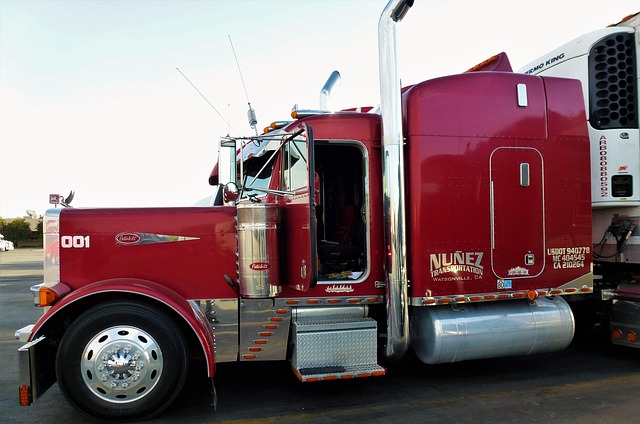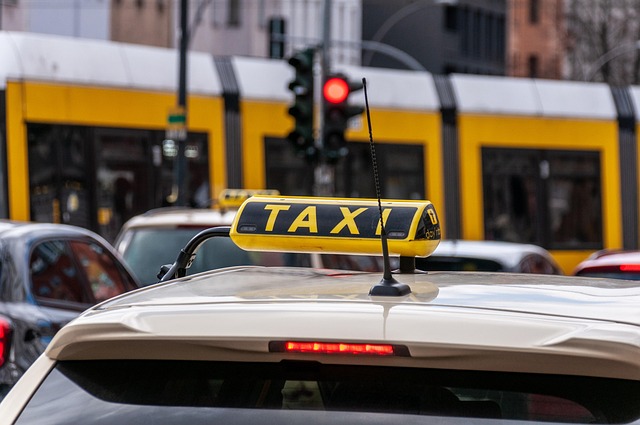Looking to register your car in California? This comprehensive guide breaks down the process step-by-step. From understanding essential requirements for car registration in California to gathering necessary documents and even performing a DMV VIN verification, we’ve got you covered. Learn how to complete the registration process at the DMV office or opt for online/mail registration.
- Understand Requirements for Car Registration in California
- Gather Necessary Documents for DMV Visit
- Perform Vehicle Identification Number (VIN) Verification
- Complete Registration Process at the DMV Office
- Register Your Car Online or by Mail: Step-by-Step Guide
Understand Requirements for Car Registration in California

Before registering your car in California, it’s crucial to understand the state’s specific requirements. The California Department of Motor Vehicles (DMV) mandates several key steps for vehicle registration, including a comprehensive vin inspection. This process verifies the Vehicle Identification Number (VIN), ensuring its accuracy and authenticity. A mobile VIN verifier can be a convenient option for this step, allowing you to complete your paperwork efficiently.
During registration, you’ll need to present valid documentation, such as proof of ownership, liability insurance, and identification. Additionally, your vehicle must pass an emission test if it meets the applicable standards. By adhering to these requirements, including a mobile VIN inspection when needed, you can ensure a smooth car registration process in California.
Gather Necessary Documents for DMV Visit

Before heading to the DMV, ensure you have all the required documents for a smooth registration process. This includes your vehicle’s registration certificate from the previous state, if applicable, and proof of insurance. The California Department of Motor Vehicles (DMV) requires a valid driver’s license or ID card, so don’t forget that. One crucial document to have on hand is the Vehicle Identification Number (VIN) verification report, which can be obtained through a mobile vin verification service or by conducting a physical inspection known as a vin inspection. This process involves checking the VIN etched into the vehicle’s chassis, ensuring it matches the details in your paperwork.
Additionally, bring any title documents related to the car’s history and a completed application form for registration. It’s also beneficial to have a clear understanding of any applicable fees to avoid surprises during your dmv vin verification visit.
Perform Vehicle Identification Number (VIN) Verification

Before registering your car in California, performing a Vehicle Identification Number (VIN) verification is a crucial step. This process ensures that your vehicle’s details match the information provided by the manufacturer and helps to prevent fraud. You can conduct this check through a DMV vin verification or consider using a mobile vin verifier for added convenience. A simple VIN inspection allows you to confirm critical data like the car’s make, model, year, and even its previous owners.
For a smooth registration process, ensure your vehicle’s VIN is accurate and legitimate. Mobile vin verification services offer a quick and efficient way to verify your car’s details without visiting a DMV office. These tools provide real-time data validation, making it easier to identify any discrepancies or potential issues early on. This step is essential in California, where strict regulations govern vehicle registration to maintain road safety and ensure all vehicles meet the required standards.
Complete Registration Process at the DMV Office

To complete the registration process for your car in California, you’ll need to visit a local DMV office. Here’s what to expect during this crucial step. First, gather all necessary documents, including proof of ownership, insurance, and identification. A mobile vin verifier can be particularly useful here as it allows you to confirm your vehicle’s history and identify any potential issues before heading to the DMV. This verification ensures that your car meets all legal standards, streamlining the registration process significantly.
Once at the DMV, locate the section dedicated to vehicle registration. An agent will guide you through the procedure, which includes filling out forms, providing proof of identification, and paying the required fees. They’ll also perform a vin inspection to verify your vehicle’s information, ensuring it matches the data in their records. Alternatively, consider using a mobile vin inspection service for added convenience, as this process can often be completed faster than waiting in line at the DMV.
Register Your Car Online or by Mail: Step-by-Step Guide

Registering your car in California has never been easier with the option to do it online or by mail. Here’s a straightforward guide for both methods.
For an online registration, start by visiting the California DMV website and selecting the appropriate form based on whether you’re registering a new or used vehicle. Fill out the required information, including your personal details and the vehicle’s specifications. The most crucial step in this process is completing the DMV VIN verification, which ensures that the vehicle’s unique identifier (VIN) matches the details in their system. Once all information is accurate and complete, submit the form electronically and follow the instructions provided to pay the registration fee online.
If you prefer mail-in registration, obtain the necessary forms from the DMV website or a local field office. Fill them out meticulously, double-checking your data and the vehicle’s VIN, which must match what’s on record with the DMV. Include all required documents, such as proof of ownership, insurance, and identification. Enclose the appropriate processing fees, then mail your application to the address specified on the form. For added convenience, consider using a mobile vin verifier for quick and accurate VIN inspection before submitting your application.
In California, registering your car involves understanding specific requirements and gathering essential documents. After performing a crucial dmv VIN verification, you can complete the process at a DMV office or opt for online/mail registration. Following these steps ensures your vehicle’s legal status and facilitates seamless driving experiences within the state.
